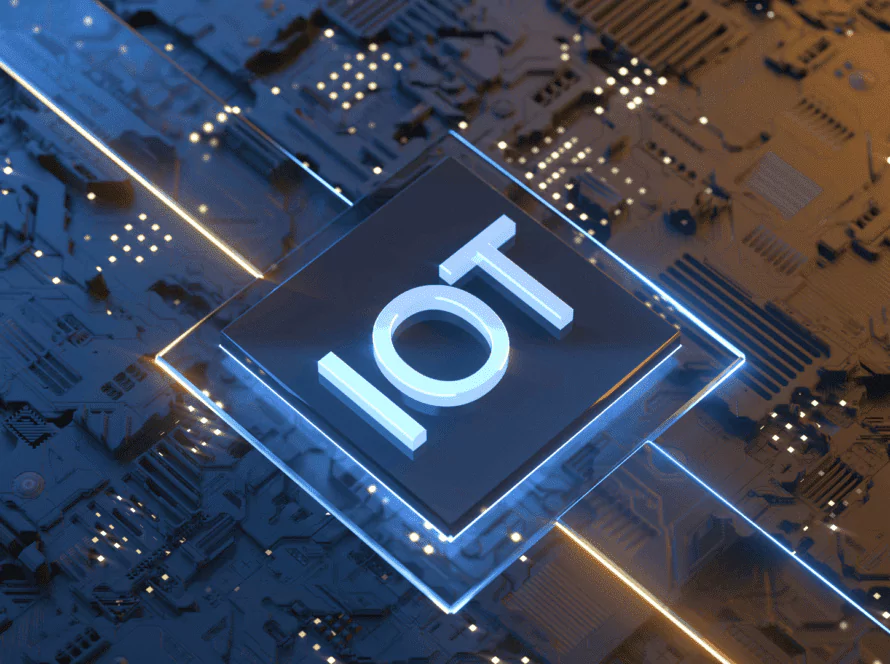The Internet of Things (IoT) is rapidly transforming industries across the globe, and the oil and gas sector is no exception. This innovative technology is connecting devices, sensors, and machines, creating a network that generates real-time data and insights, leading to increased efficiency, improved safety, and reduced environmental impact.
As an experienced consultant in an IT consultancy firm, I’ve witnessed firsthand the transformative power of IoT in the oil and gas industry. In this blog post, I’ll delve into the intersection of technology, work, and personal life, showcasing real-life examples of how IoT solutions are revolutionising both work environments and personal spaces within the industry.
Why IoT in Oil and Gas?
The oil and gas industry is undergoing a significant transformation, driven by the need to improve efficiency, reduce costs, and enhance safety. The Internet of Things (IoT) is playing a crucial role in this transformation, offering a wide range of benefits that can help oil and gas companies achieve their goals.

Benefits of IoT in Oil and Gas
1. Improved Operational Efficiency:
Remote monitoring and control:
IoT sensors can be deployed throughout oil and gas facilities to monitor equipment performance, environmental conditions, and other critical parameters. This data can be used to optimise operations, identify potential problems early on, and take corrective action before they become major issues.
Predictive maintenance:
By analysing sensor data, companies can predict when equipment is likely to fail and schedule maintenance accordingly. This reduces downtime and associated costs, while also ensuring that equipment is always operating at peak performance.
Automated processes:
IoT can automate many tasks in oil and gas operations, such as valve control, pipeline monitoring, and data collection. This frees up employees to focus on more strategic tasks and improves overall efficiency.
2. Reduced Costs:
Reduced downtime:
Predictive maintenance and remote monitoring can help to prevent equipment failures, which can lead to significant cost savings.
Optimised energy consumption:
IoT sensors can be used to monitor energy consumption and identify areas where it can be reduced.
Improved logistics:
IoT can be used to track the movement of oil and gas products, which can help to optimise logistics and reduce transportation costs.
3. Enhanced Safety:
Real-time monitoring:
IoT sensors can be used to monitor hazardous areas and alert workers to potential dangers. This can help to prevent accidents and injuries.
Improved worker safety:
IoT can be used to track the location of workers in hazardous areas and ensure that they are safe.
Environmental monitoring:
IoT sensors can be used to monitor air and water quality, which can help to protect the environment.
Examples of IoT Applications in Oil and Gas
Remote monitoring of pipelines:
Sensors can be installed on pipelines to monitor pressure, temperature, and flow rate. This data can be used to detect leaks and other problems early on, preventing environmental damage and costly repairs.
Predictive maintenance of pumps and compressors:
Sensors can be used to monitor the performance of pumps and compressors and predict when they are likely to fail. This allows for scheduled maintenance, reducing downtime and associated costs.
Automated tank level monitoring:
Sensors can be used to monitor the level of oil and gas in storage tanks. This data can be used to optimise inventory management and avoid overfilling or underfilling tanks.
Worker safety monitoring:
Wearable devices can be used to monitor the health and safety of workers in hazardous areas. This data can be used to alert workers to potential dangers and ensure that they are safe.
Navigating the Headwinds: Challenges and Considerations for the Oil and Gas Industry
The oil and gas industry, a cornerstone of the global economy for over a century, finds itself at a crossroads. While demand for its products remains high, the sector faces a multitude of challenges that demand careful consideration and innovative solutions. From geopolitical instability and climate change concerns to technological advancements and evolving market dynamics, navigating these headwinds requires strategic foresight and adaptability.
Geopolitical Landscape and Market Volatility:
The global oil and gas landscape is increasingly volatile, with geopolitical events significantly impacting supply chains and prices. Recent conflicts and sanctions have disrupted production and trade flows, leading to price spikes and market uncertainty. This volatility underscores the need for diversification of energy sources and supply chains, reducing reliance on any single region or producer.
Climate Change and Sustainability Imperatives:
The growing focus on climate change and the urgent need for decarbonization pose significant challenges for the industry. Governments worldwide are implementing stricter environmental regulations and promoting renewable energy sources, putting pressure on oil and gas companies to reduce their carbon footprint and invest in cleaner technologies. Adapting to these changing regulations and embracing sustainable practices will be crucial for the industry’s long-term viability.
Technological Advancements and Disruption:
The oil and gas industry is witnessing rapid technological advancements, from artificial intelligence and robotics to data analytics and automation. These advancements offer opportunities for increased efficiency, cost reduction, and improved safety. However, they also pose the risk of disruption, requiring companies to invest in upskilling their workforce and embracing digital transformation to stay ahead of the curve.
Shifting Market Dynamics and Consumer Preferences:
The global energy landscape is evolving, with growing demand for cleaner and more sustainable energy solutions. Consumers are increasingly opting for electric vehicles and energy-efficient appliances, putting pressure on the traditional oil and gas market. The industry needs to adapt to these changing preferences by diversifying its product portfolio and exploring new markets for its products.
Navigating the Challenges:
To navigate these challenges effectively, oil and gas companies need to adopt a multi-pronged approach:
Embrace Innovation: Investing in research and development of cleaner technologies, such as carbon capture and storage, and exploring alternative energy sources like hydrogen and biofuels.
Focus on Sustainability: Implementing robust environmental management practices, reducing carbon emissions, and working towards net-zero targets.
Enhance Operational Efficiency: Utilizing advanced technologies to optimize production processes, reduce costs, and improve safety.
Develop Human Capital: Upskilling the workforce to adapt to changing technologies and embrace digital transformation.
Engage with Stakeholders: Proactively engaging with governments, communities, and investors to address concerns and build trust.
Future Trends and Considerations
As the Internet of Things continues to evolve, we can expect to see even more exciting developments in the oil and gas industry and beyond. Some of the key trends and considerations include:

Edge Computing and 5G Connectivity
The rise of edge computing and the rollout of 5G networks are expected to greatly enhance the capabilities of IoT in the oil and gas industry. By processing data closer to the source, edge computing can reduce latency and improve the responsiveness of IoT systems, enabling real-time decision-making and enhanced operational efficiency. Meanwhile, 5G’s increased bandwidth and lower latency will enable the seamless connectivity of a vast network of IoT devices, further unlocking the potential of this technology.
Cybersecurity and Data Privacy
As the number of IoT devices and the amount of data they generate continue to grow, the importance of robust cybersecurity and data privacy measures will become increasingly critical. Oil and gas companies, as well as individuals, will need to invest in advanced security solutions and implement stringent data management protocols to protect their networks, devices, and sensitive information from cyber threats.
Sustainability and Environmental Impact
The oil and gas industry’s environmental impact is a significant concern, and IoT will play a crucial role in driving more sustainable practices. From monitoring and reducing emissions to optimizing resource usage and promoting renewable energy integration, IoT-enabled solutions will be at the forefront of the industry’s efforts to minimise its carbon footprint and contribute to a more sustainable future.
Conclusion
So, there you have it! The Internet of Things is revolutionising the oil and gas industry, bringing a wave of benefits that improve safety, efficiency, sustainability, and much more. It’s an exciting time to be part of this dynamic industry, and I, for one, can’t wait to see what the future holds.
If you’re ready to unlock the full potential of IoT for your Oil & Gas operations, don’t hesitate to reach out to experts like [ThinkScoop Inc.]. Together, we can navigate the challenges, embrace the opportunities, and build a future where technology and innovation fuel progress.
So, are you ready to embark on this exciting journey into the future of Oil & Gas with IoT by your side? Let’s make it happen!



